
INTRODUCTION
“Do you blame a vulture for perching over a carcass?” ~ Chinua Achebe
Wings are those elements or the parts of the bird which make the difference between an animal and a bird. Feathers are inclined to fly in the sky but due to the insouciance of the government, scientists and environmentalists, they suffered and adversely suffered.
When the word Indian is heard the thing which comes to our mind is the great culture, tradition, emotions, respect and loyalty. The Indian subcontinent is civilized from the very beginning and its live proofs are present in the form of the places which have been excavated of Indus Valley Civilisation and Harappan Civilisation from the different sites of the Indian subcontinent. There are so many mythological tales that explicit that people were so humane and polite and loyal towards each other and also to nature. In India, not only deities are worshipped but also animals are loved and respected. We can see it in the form of cow worship, Snake worship and likewise of the worship of Vultures. Now in the present world, the greed of humans has increased in such a way that it has forgotten to take care of others, particularly of animals. Today, we are going to discuss about Vultures. The vultures are ridden by the Lord Vishnu, the Vulture(Jatayu) who protected Mother Sita with his all efforts from the Ravan and Martyred. Vultures are considered as the 'Natural Scavenger' because they protect the surroundings and clean and clear the environment to spread disease. Now, however, it appears that after a few years we will not be able to see the vultures in the sky and once again humans will be responsible for the extinction of one more animal. There is a flabbergasting fact about Vultures and that is around the 1980s the number of the vultures were around 40 million or 4 crores but abruptly their numbers had begun to fall down very rapidly in the mid of 90s and till 2005 its number decreased dramatically and that was around 97%. It means not even one percent are in existence. As per the latest counting, approximately only 19000 are remaining. The very first time decline in the number of vultures was recorded in India was at Keoladeo Ghana National Park, Rajasthan. The real reason couldn't be known till then but it was assumed that probably due to the non-availability of food(dead livestock) or by dint of some unknown viral epidemic disease but later on it was confirmed that the decline was caused by the use of diclofenac which was used as an anti-inflammatory medicine for cattle.
TYPES OF VULTURES
There are a total of 9 species of vultures who are in existence and struggling for their survival on the planet. It is due to the inadvertence of environmentalists and governments. The species are as follows:-
1. Oriental White-backed Vulture:
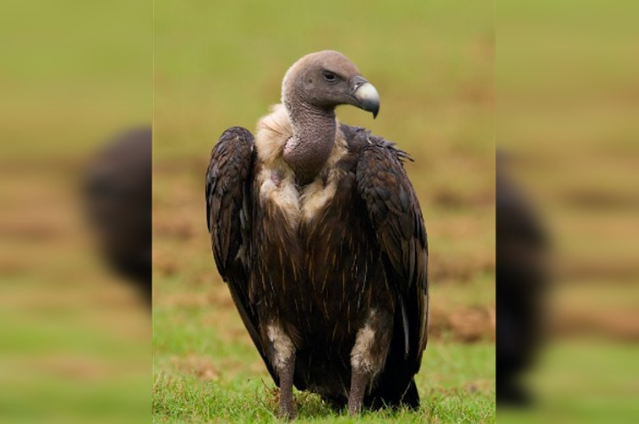
The scientific name of this bird is Gyps bengalensis. The White-backed Vulture is a Sub-Saharan African species that can be found from Mauritania east to Sudan and Ethiopia and south to northern and eastern South Africa. And it is a socially loved variety of vultures; known for its speed to clear the carcass in just 3 minutes.
2. Slender-billed Vulture:
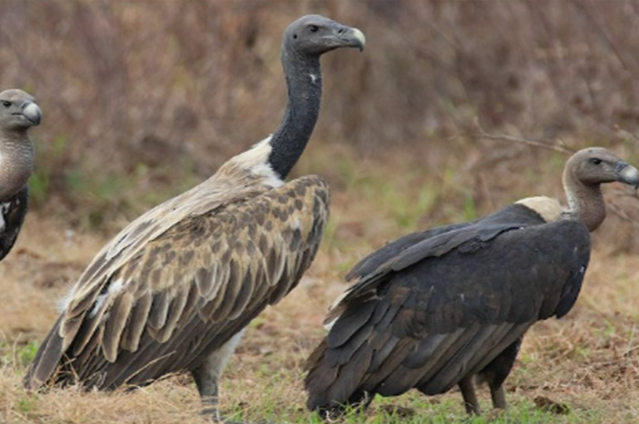
It's scientific name is Gyps tenuirostris. This Vulture is deemed an Old World Vulture and is natively found in the sub-Himalayan region and southeast Asia. Since 2002, it critically endangered and fewer than 870 matures may be alive.
3. Long-billed Vulture:
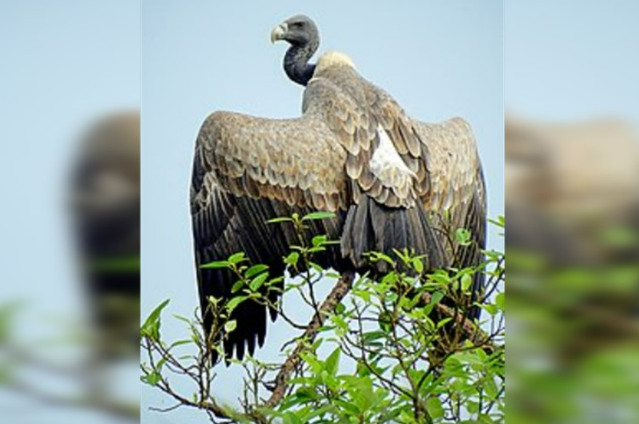
It's scientific name is Gyps indicus. This Vulture is found in the southeastern region of Pakistan and India, South of the Ganges river, east of Indochina and the northern Malaya peninsula.
4. Egyptian Vulture:
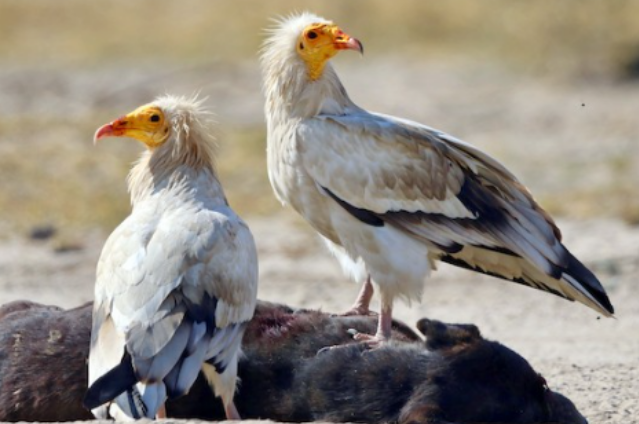
It's scientific name is Neophron percnopterus. The Egyptian vulture also called the white scavenger vulture or pharaoh's chicken is a small Old World vulture and the only member of the genus Neophron. The Egyptian vulture is found in Southern Europe, Africa, the Middle East, Central Asia, and India.
5. Red-headed Vulture:
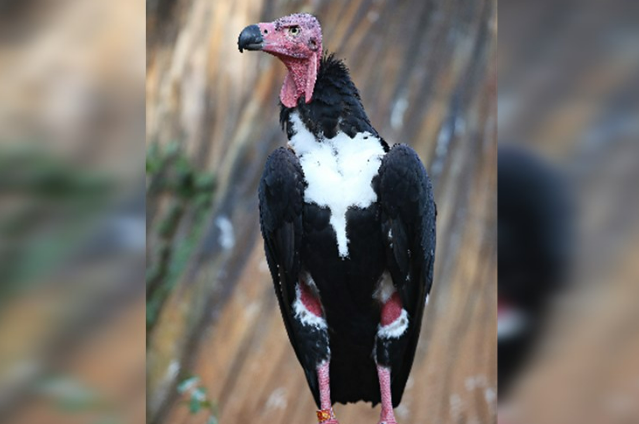
It's scientific name is Sarcogyps calvus. The red-headed vulture, also known as the Asian king vulture, Indian black vulture or Pondicherry vulture, is an Old World vulture mainly found in the Indian subcontinent, with small disjunct populations in some parts of Southeast Asia.
6. Indian Griffon Vulture:
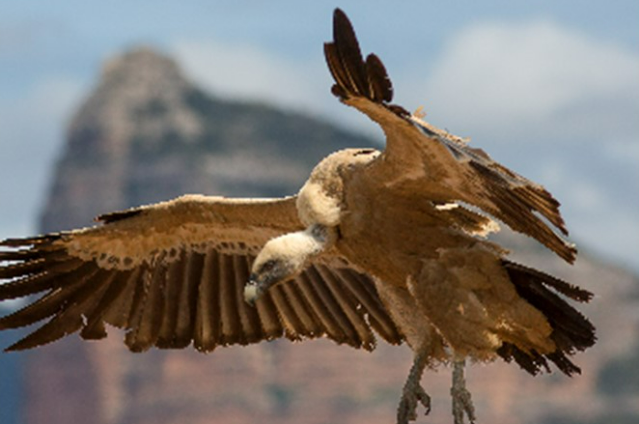
It's scientific name is Gyps fulvus. The griffon vulture is a large Old World vulture in the bird of prey family Accipitridae. It is also known as the Eurasian griffon. It is not to be confused with a different species, Rüppell's griffon vulture. It is closely related to the white-backed vulture.
7. Himalayan Griffon Vulture:
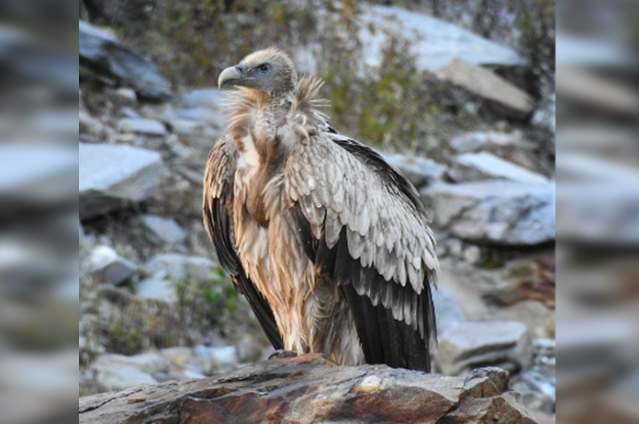
It's scientific name is Gyps himalayensis. The Himalayan vulture or Himalayan griffon vulture is an Old World vulture native to the Himalayas and the adjoining Tibetan Plateau. It is one of the two largest Old World vultures and true raptors. It is listed as Near Threatened on the IUCN Red List. These raptors prefer rocky areas and mountain peaks, where they mostly reside in altitudes between 1200 and 5500 meters.
8. Cinereous Vulture:
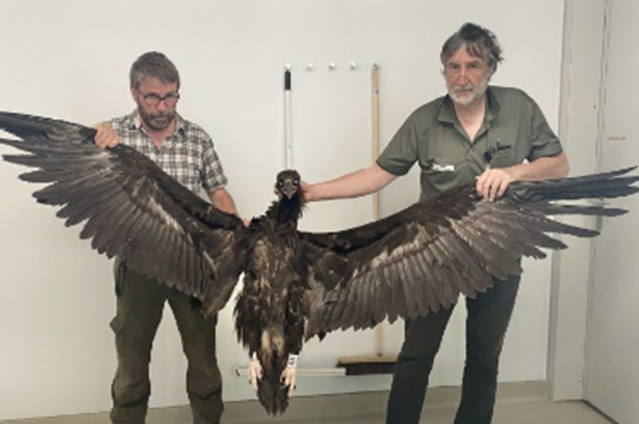
It's scientific name is Aegypius monachus. The cinereous vulture is a large raptor in the family Accipitridae and is distributed through much of temperate Eurasia. It is also known as the black vulture, monk vulture, and Eurasian black vulture. It can in the sky up to a distance of 23,000 feet. The cinereous vulture ranges through southern and eastern Europe, the Middle East, Central Asia, Mongolia, and southern China.
9. Bearded Vulture:

It's scientific name is Gypaetus barbatus. The bearded vulture, also known as the lammergeier and ossifrage, is a very large bird of prey and the only member of the genus Gypaetus. This bird is also identified as the Huma bird or Homa bird in Iran and northwest Asia.
It's lifespan is maybe 40 years.
In India, the number of three species i.e. White-backed Vulture, Slender-billed Vulture, and Long-billed Vulture in the wild reduced greatly. Red-headed Vulture or king Vulture Slender-billed Vulture and Long-billed Vulture are enrolled in critically dangered species. Egyptian Vulture and White-backed Vulture are now classified as Endangered.
CAUSES OF THE DEATHS OF VULTURES "NATURAL SCAVENGER"
"Earth provides enough to satisfy every man's need but not every man's greed." - Mohandas Karamchand Gandhi
There were a few reasons behind the deaths of vultures and those are in this way:
1. DICLOFENAC:
Its chemical name is 2-[(2,6-Dichlorophenyl)amino]benzeneacetic acid sodium salt. It's a Non-steroid anti-inflammatory drug (NSAID), it is administered to reduce inflammation and to reduce pain in certain conditions. Diclofenac was used to give to the cattle to treat them but the same medicine became a curse for vultures because when vultures were having the dead bodies of the animals they were unable to break down the chemical diclofenac which led to the accumulation of uric acid within tissues and on the surfaces of internal organs, was observed in 85% of dead vultures found. In short, we can say that they died due to renal failure which caused due to the reduction in the synthesis of renal prostaglandins.
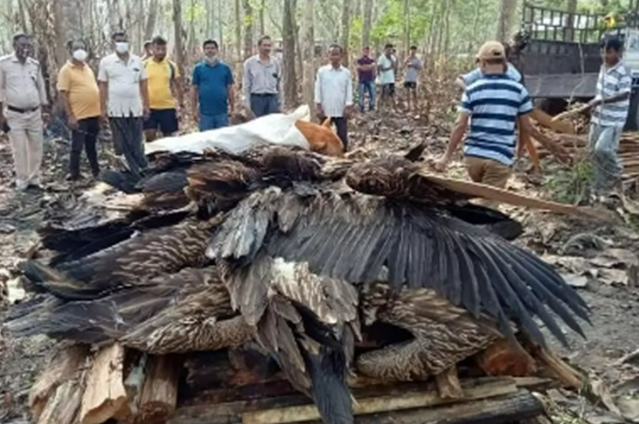
2. Deforestation:
Vultures are those birds who are known to make nests on towering trees like Palm trees, Coconut trees, Sal trees, Teak trees, Mango trees, etc. For commercial use, however, trees are being cut. And owing to that vultures are decreasing in numbers because farmers have to cut the tree for their commercial use and due to that Vultures reduce.
3. Reproduction Capability:
Vultures are big in size. They are not one of those birds who produce more than 3 to 6 eggs. A vulture is a monogamous bird, known usually to produce 1 egg in a year. And both parents take turns incubating the egg until it becomes ready to hatch for about 2 months. Due to producing fewer eggs, it takes a lot of time to increase their numbers.
4. Fatal medicines:
In the year 2006, when it became apparent to everyone that Diclofenac is responsible for the deaths of the vultures the government of India banned it. However, human forms of diclofenac were used to treat sick cattle. There are some other NSAIDs which are deleterious and are being used such as Aceclofenac, Carprofen, Flunixin and Ketoprofen.
5. Not use of an Alternative:
Meloxicam is a second-generation NSAID and is noted better than diclofenac for the treatment of livestock, with less risk of side effects, and is also approved for human use in more than 70 countries. There is one limitation of it and that is it is a little expensive relative to diclofenac and which is the cause why people escape avoiding Meloxicam which again leads to the death of vultures.
WHAT IF THERE IS NO VULTURE?
In the ecosystem, there is a system which sustains that is known as Food Chain. In this chain, every animal is involved. And when any animal or bird or reptile reaches on the verge of extinction, the system begins to disturb. And not only this change brings important direct to indirect impact on society. Let's learn some significance of vultures in our planet or what happens if there is no vulture:-
- If the vultures are extinct from the environment then the carcasses will start decaying in large numbers in the country which may lead to the spread of an epidemic or even a pandemic. For instance, Rabies, Tuberculosis, Anthrax and cracking, etc.
- An increase in the number of rats and stray dogs. The movement of Feral dogs into carcass dumps increases the spread of diseases such as Rabies
- Equilibrium between populations of other scavenging species will be affected.
- Vultures are prime removers of the dead bodies of animals in India and Africa. The absence of them greatly affects.
- The extinction of Vultures will lead to an imbalance in the ecosystem.
- There is Custom in the Parsis community, as per to that after the death of a Parsi person his dead body is kept at a high altitude place or at the "Towering of the Silence" for vultures to feed upon will be affected.
MEASURES TAKEN TO CONSERVE VULTURES
The deaths of vultures were found in unprecedented numbers and it is great to point out the discussion. Humans are responsible for the occurrence of all those things which are not good for nature. When we talk about animals we find that they are in worse conditions. They are cut into pieces in the name of taste of tongue, religion, entertainment, and so on and on and on. We need to understand that animals are not taking our place we(humans) are taking their place. However, a silver lining is still there in the hope to see once again the flying and natural scavenging vultures in the sky.
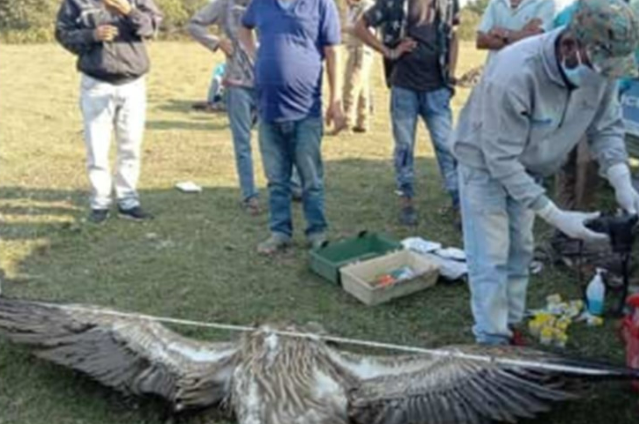
There are some significant steps which were/are taken and those are in this way:
1. Vulture Safety Zone:
It is commonly called VSZ. It may be unique for Asian Countries but it is in vogue in European Countries. The objective of developing VSZs is to make a large area free from diclofenac and other medicines which have the same impact as diclofenac. In this concern, some zones have been determined to protect the vultures and increase their numbers. There are three zones which are given below:
a. The zone between Uttarakhand and Nepal, which covers the area from Corbett to Katriya Ghat, a Tarai belt covering 30,000 Sq. Kilometers; which is highlighted as Vulture safe zone. Slender-billed Vulture and White-backed Vulture are found in this area.
b. A belt between Dibrugarh in Assam to North Lakhimpur in Arunachal Pradesh will also be conserved as a vulture safe zone. It will be for Slender-billed and White-backed Vulture.
c. Third and the last zone will be in central India covering the states like Chhatisgarh and White-backed Vulture and Long-billed Vulture will be endeavored to conserve.
- Advantages of VSZs:
(i) Spread awareness with regard to saving vultures and raising funds to help.
(ii) A chance for the biologist to do further study on these endangered species to find more solutions to increase their numbers.
(iii) Opportunity for the eco-tourists to behold these birds who is known for cleaning the environment.
(iv) Extra food will help breeding colonies increase their breeding success by improving the survival chances of the young vultures.
(v) Uncontaminated food will be received by the vultures.
2. Vulture Restaurant Sites:
This is a unique way to protect the vultures in this separate and reserved tables are arranged for vultures to take their flesh. And it is done by Maharashtra and Punjab Forest Departments. There are certain aims of it, which are the following:
(i) Protect the decreasing numbers of vultures.
(ii) Shortage of food is also the reason for their deaths. But after through this way vultures will be getting diclofenac-free carcasses which will be available to them through VR.
(iii) Vulture Restaurant will prompt the people to come and give their contribution to safeguarding through in-suit conservation.
(iv) People who are living in the countryside will inform the forest department about the carcass of an animal and department after checking the dead body; if they find that body is diclofenac free then it will be provided to the vultures and the forest department will provide monetary help to the informer and body provider.
(v) Apart from this, whenever a vulture nesting is found, conservation measures like providing safe food near the nesting tree, constant protection from all sorts of disturbance, etc. are put in place without delay.
This method is followed in Kathlore, Chandola, and Chamraur of Punjab. Gadchiroli, Thane, Nagpur, Nashik and Raigad districts of Maharashtra.
3. Breeding Centres in India:
To protect the endangered species of vultures breeding is important and in this concern, establishment become important so there are some of them Breeding centers-
- Vulture Breeding and Conservation Centre, Pinjore, Harayana in 2001 and Rani, Guwahati in Assam and another one was set up at Buxa, West Bengal in 2005.
- The Central Zoo Authority of India had also committed to supporting 4 such Centres in the Zoo at Junagarh, Bhopal, Hyderabad, and Bhubaneswar in 2006-07.
4. To save the three species of Gyps Vulture:
The protection status of all three species of vultures had been upgraded from Schedule IV to Schedule I of the Wild Life Protection Act, 1972
a. Oriental White-backed Vulture or White-rumped vulture.
b. Long-billed Vulture
c. Slender-billed Vulture
There are some environmental organisations which are playing an important role with regard to the improvement of the life of vultures and those are as follows:
(i) Bird Conservation Nepal
(ii) Bombay Natural History Society, India
(iii) International Centre for birds of Prey, U.K.
(iv) National Trust for Nature Conservation, Nepal
(v) Royal Society for the Protection of Birds, U.K.
5. India's Role in Conservation:
India moved a motion in IUCN in 2004 for vulture conservation, which was accepted in the form of the IUCN resolution which was called Gyps vulture Range countries to begin action to prevent all use of diclofenac. And the enunciation of the IUCN south Asia Task Force. It ranges countries to develop and implement national vulture recovery plans.
6. Government of India has formulated a National Action Plan(2006) on vulture conservation. This plan renders for strategies, and actions for containing the decline of the vulture population through ex-suit, in-suit vulture conservation.
7. The veterinary drug Diclofenac has been prohibited by the government to use. And as an alternative to it, Meloxicam is suggested. It is licensed as a veterinary drug in India, Europe and USA.
8. Awareness programmes are being run in order to make conscious, groups such as veterinaries, pharmacists, school children, government agencies and local communities. So that they came out more efforts in this direction to save the vultures as early as possible.
In addition to all these, there are some other efforts like Asia's first 'Gyps Vulture Reintroduction Programme' launched at Pinjore. Two Himalayan griffons were released into the wild from the Jatayu Conservation Breeding Centre, Pinjore.
CONCLUSION
"Doctrinaires are the vultures of principle. They feed upon principle after it is dead.” ~ David Lloyd George
As the world is growing with time in terms of modernity and technology, we need to understand here that we cannot keep nature's importance. We should understand that we are the only ones who are responsible for climate and also the returning the image of Nature. We need to learn the importance of the value of nature and animals. As humans have fundamental rights to live, animals should also have.
. . .
Bibliography:
- Wikipedia
- Environment, Shankar IAS Academy Book Publication
